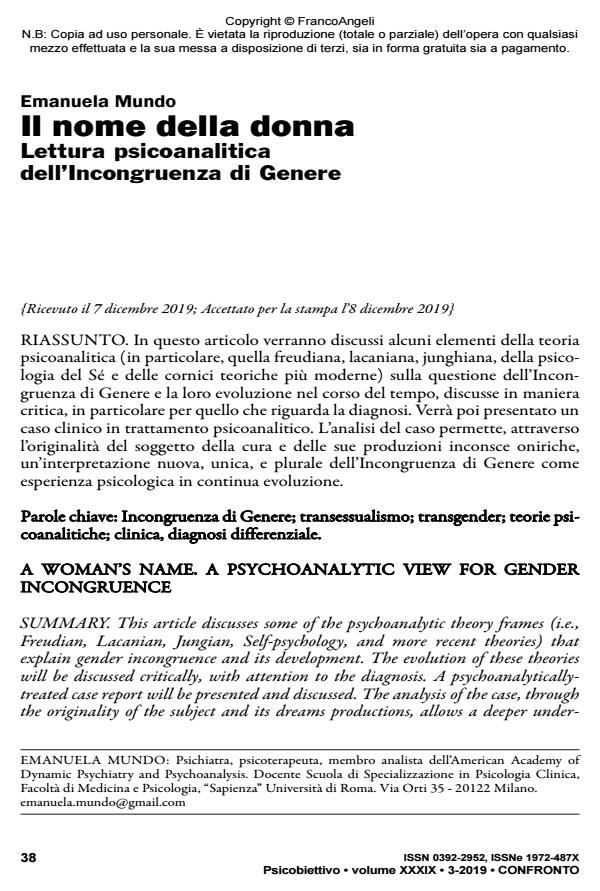A woman’s name. A psychoanalytic view for gender incongruence
Journal title PSICOBIETTIVO
Author/s Emanuela Mundo
Publishing Year 2020 Issue 2019/3
Language Italian Pages 20 P. 38-57 File size 174 KB
DOI 10.3280/PSOB2019-003003
DOI is like a bar code for intellectual property: to have more infomation
click here
Below, you can see the article first page
If you want to buy this article in PDF format, you can do it, following the instructions to buy download credits

FrancoAngeli is member of Publishers International Linking Association, Inc (PILA), a not-for-profit association which run the CrossRef service enabling links to and from online scholarly content.
This article discusses some of the psychoanalytic theory frames (i.e., Freudian, Lacanian, Jungian, Self-psychology, and more recent theories) that explain gender incongruence and its development. The evolution of these theories will be discussed critically, with attention to the diagnosis. A psychoanalyticallytreated case report will be presented and discussed. The analysis of the case, through the originality of the subject and its dreams productions, allows a deeper under standing of the new, unique, and plural interpretation of the gender incongruence phenomenon as a psychological condition in progress.
Keywords: Gender Incongruence; Transexualism; Transgender; Psychoanalytic Theories; Clinical Approach; Differential Diagnosis.
Emanuela Mundo, Il nome della donna. Lettura psicoanalitica dell’Incongruenza di Genere in "PSICOBIETTIVO" 3/2019, pp 38-57, DOI: 10.3280/PSOB2019-003003